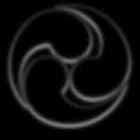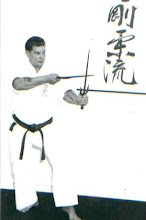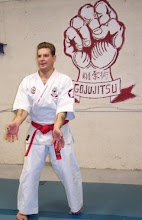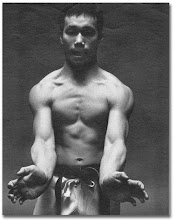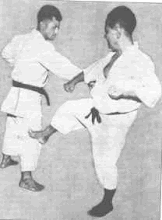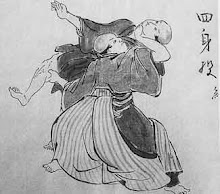Here is part of an interview, done with with Maestro Peter Urban in Puerto Rico circa 1986.
Wednesday, November 27, 2019
Tuesday, November 26, 2019
The Ultimate Bruce Lee Collection!
The Mother Load of Bruce Lee pictures. Very rare and unseen by most. I also included audio with an interiew with Lee Jun Fan. If you have an interest in Bruce Lee, give it a look.
Thursday, November 21, 2019
KaraTe Beneath The Surface, A Book by Roy Kenneth Kamen
I'm pretty prejudice when it comes to writings and publications on the martial arts.
I've been reading martial arts books since I was a little kid in the 1960s. My teacher wrote a very famous book about KaraTe, and encouraged us to read everything available, as to broaden our prospectives.
Reading martial arts books enhanced my reading comprehension to the point that in 7th grade, my reading comprehension level was that of a college sophomore.
With that said, and considering just how many martial arts books I have read, and reread over and over, I just may know what I'm talking about when it comes to this subject.
My martial arts library has always been very large, and varied. Recently, I relocated back to Florida, and had to leave much of my belongings with my son until I establish myself. I took only one book with me. That book is KaraTe Beneath The Surface, By Roy Kamen.
Roy Kamen is a personal friend of mine, and fellow GoJuKa. Like me, he began his martial arts training in 1965. He started out in IsShin Ryu KaraTe under his brother Rob Kamen, who incidentally wrote and produced the movie The KaraTe Kid. Both brothers later moved over to ShoreiKan GoJu Ryu under Seikichi Toguchi.
Seikichi Toguchi and Roy Kamen
Later both brothers would come under the direction of Dai Sensei Kow Loon "Kayo" Ong, in the Chi I Do International Organization.
Kow Loon Ong, Marina and Roy Kamen
Roy Kamen is not just a physical type of KaraTeKa. He is deeply involved in the spiritual and holistic aspects of the art. He is also an accomplished music producer, and applies this same spirituality to both his martial arts and his music.
KaraTe Beneath The Surface is not a book about punching and kicking. It goes way deeper than that. Roy breaks down the original premise behind the Embusen or performance line of the kata of GoJu Ryu, as they are actually Mandalas.
San Chin
TenSho
KaraTe Beneath The Surface exposes the actual purpose of the breathing done in our kata, which are actually and originally Mudras associated with the afore mentioned Mandalas.
When I say that Roy Kamen is very much into the Spiritual and Holistic side of the arts, I don't mean to say that he neglects the physical. Quite the contrary, his KaraTe is very practical and effective. This book serves to enhance ones understanding of the art, and the physical can only be strengthened by a deeper understanding of the Spiritual.
The book contains stories of Roy's early years, and the way various experiences shaped his life, and outlook on the arts.
The feelings and emotions that the kata represent are very well explained.
Some books you can read a chapter or two, put them down, and continue another time.
This book is hard to put down.
If you are a serious martial artist, or just have a serious interest in the martial arts, I highly recommend this wonderful work by Sensei Roy Kamen.
If I had to rate it on a scale of one to ten, this book would definitely be wearing a RED BELT...
Double click on the video to enter full screen.
Dai Sensei, Kow Loon "Kayo" Ong explains Da Na Kow.
The art of Naha Te / GoJu Ryu, is actually the Okinawan version of Fukienese Chuan Fa = Southern Chinese Gung Fu.
Throughout the years, much of the substance of the art has been lost, omitted, or just not learned, by those who practice for competition, and or hobby.
There are intricacies that few actually know, but if one looks deeply enough, and is willing to do the research and foot work, they are still there for the taking.
A few years back, while visiting my old friend and Older Martial Arts Brother, Dai Sensei, Kow Loon "Kayo" Ong, Chairman of Chi I Do International, at his home in New York City's Chinatown, I had the opportunity to video tape a part of our long and detailed conversation. In this rare video, Dai Sensei, Ong explains the concept of Da Na Kow.
Throughout the years, much of the substance of the art has been lost, omitted, or just not learned, by those who practice for competition, and or hobby.
There are intricacies that few actually know, but if one looks deeply enough, and is willing to do the research and foot work, they are still there for the taking.
A few years back, while visiting my old friend and Older Martial Arts Brother, Dai Sensei, Kow Loon "Kayo" Ong, Chairman of Chi I Do International, at his home in New York City's Chinatown, I had the opportunity to video tape a part of our long and detailed conversation. In this rare video, Dai Sensei, Ong explains the concept of Da Na Kow.
Tuesday, November 19, 2019
Dr. Ernest Hyman
Osu! Today is the One Year Anniversary of the passing of my old friend and senior, Dr. Ernest Hyman. It seems like only yesterday, that I watched this demo at Aaron Banks' Oriental World of Self Defense, at Madison Square Garden... RIP
.
Monday, November 18, 2019
Styles, Systems, and Ryu Ha. A look at the development and metamorphosis of KenShiKai KaraTeDo.
There are many styles and organizations of KaraTe these days. Far too many to list here. However, I thought it may be interesting to take a look at the development and metamorphosis of one of the newer ones...
This is far from a complete history of this style. If anything, this is the abridged version.
Having recently featured our own Shihan Russell Bianca here on That's My Satori, I thought it apropos to write a piece about the fine group that he comes out of, and how it began.
When KaraTe was originally practiced in Okinawa, it was referred to as Te, meaning Hand.
Okinawa Te consisted of 3 separate entities, which were named after the location that they were practiced, Naha Te, Shuri Te, and Tomari Te.
Later, when KaraTe became more established, and was being introduced to Mainland Japan, these 3 types of KaraTe were given more distinct and descriptive names. Naha Te became GoJu Ryu, Toon Ryu, and Ueichi Ryu. Shuri Te became ShoRin Ryu, and Tomari Te became Okinawa Kenpo.
Once introduced to Japan through College KaraTe Clubs, Naha Te / GoJu Ryu was promoted by Gogen Yamaguchi and the GoJu Kai, while Shuri Te / ShoRin Ryu was promoted by Gichin Funakoshi and the ShoToKai.
The RitsumeiKan University KaraTe Club "GoJu Ryu" Captain, was Nei Chu So, a native of Korea, who became a Japanese national.
The Waseda University KaraTe Club "ShoToKai" Captain was Geiko Funakoshi, son of Gichin Funakoshi.
This was the beginning of the popularization of KaraTe in Mainland Japan.
Having been recognized by BuTokuKai as a legitimate Japanese Martial Art, KaraTe was thriving now in Mainland Japan, and being promoted through competition between the College KaraTe Teams.
A Korean born, now Japanese national, named Masutatsu Oyama studied KaraTe under these two afore mentioned Team Captains, first under Geiko Funakoshi of ShotoKai and later under his fellow Korean expatriate Nei Chu So.
After years of training in both ShoToKai and GoJu Ryu, Masutatsu Oyama formed his own brand of KaraTe that he named KyokuShinKai.
Proving his new style through many challenge matches, and demonstrations, Oyama's KyokuShinKai became very popular all over the world.
Oyama had two champion students, Shigeru Oyama, and Tadashi Nakamura, that he later sent to the United States to teach, spread, and promote his KyokuShinKai. They developed many champion students of their own, often bringing them back to Japan to fight in their teacher's tournament.
After many years of serving as Oyama's representatives, these two men made the decision to branch off on their own, respectively. Nakamura forming his own SeiDo Juku Organization in 1985, and Oyama forming USA Oyama KaraTe.
Both Organizations and teachers became quite successful in the West.
Nakamura had a student named William Oliver, who became a very well know champion of both the Oyama events, and on the New York tournament scene. He was also Nakamura's Chief Instructor.
Many will remember him being showcased in the movie Fighting Black Kings, which was a vehicle for Oyama's KyokuShinKai, and tournament.
After many years, serving as Chief Instructor at Nakamura's DoJo, William Oliver decided that it was time for him to do as his teacher did, and as his teacher's teacher did, and in 2001, moved on to form his own organization, KenShiKai KaraTeDo, with the help of his classmates / students, Monte Allen, Leighton Barker, Leroy Bennett, and Paul Sookdar.
On November 20, 2004 William Oliver passed away in his DoJo.
KenShiKai KaraTe Do is now prospering in the various DoJo in New York, and South Africa, that belong to this organization.
One of these DoJo, is The Brooklyn KenShiKai DoJo, headed by Shihan Russell Bianca.
This is far from a complete history of this style. If anything, this is the abridged version.
Having recently featured our own Shihan Russell Bianca here on That's My Satori, I thought it apropos to write a piece about the fine group that he comes out of, and how it began.
When KaraTe was originally practiced in Okinawa, it was referred to as Te, meaning Hand.
Okinawa Te consisted of 3 separate entities, which were named after the location that they were practiced, Naha Te, Shuri Te, and Tomari Te.
Later, when KaraTe became more established, and was being introduced to Mainland Japan, these 3 types of KaraTe were given more distinct and descriptive names. Naha Te became GoJu Ryu, Toon Ryu, and Ueichi Ryu. Shuri Te became ShoRin Ryu, and Tomari Te became Okinawa Kenpo.
Once introduced to Japan through College KaraTe Clubs, Naha Te / GoJu Ryu was promoted by Gogen Yamaguchi and the GoJu Kai, while Shuri Te / ShoRin Ryu was promoted by Gichin Funakoshi and the ShoToKai.
The RitsumeiKan University KaraTe Club "GoJu Ryu" Captain, was Nei Chu So, a native of Korea, who became a Japanese national.
The Waseda University KaraTe Club "ShoToKai" Captain was Geiko Funakoshi, son of Gichin Funakoshi.
This was the beginning of the popularization of KaraTe in Mainland Japan.
Having been recognized by BuTokuKai as a legitimate Japanese Martial Art, KaraTe was thriving now in Mainland Japan, and being promoted through competition between the College KaraTe Teams.
A Korean born, now Japanese national, named Masutatsu Oyama studied KaraTe under these two afore mentioned Team Captains, first under Geiko Funakoshi of ShotoKai and later under his fellow Korean expatriate Nei Chu So.
After years of training in both ShoToKai and GoJu Ryu, Masutatsu Oyama formed his own brand of KaraTe that he named KyokuShinKai.
Proving his new style through many challenge matches, and demonstrations, Oyama's KyokuShinKai became very popular all over the world.
Oyama had two champion students, Shigeru Oyama, and Tadashi Nakamura, that he later sent to the United States to teach, spread, and promote his KyokuShinKai. They developed many champion students of their own, often bringing them back to Japan to fight in their teacher's tournament.
After many years of serving as Oyama's representatives, these two men made the decision to branch off on their own, respectively. Nakamura forming his own SeiDo Juku Organization in 1985, and Oyama forming USA Oyama KaraTe.
Both Organizations and teachers became quite successful in the West.
Nakamura had a student named William Oliver, who became a very well know champion of both the Oyama events, and on the New York tournament scene. He was also Nakamura's Chief Instructor.
Many will remember him being showcased in the movie Fighting Black Kings, which was a vehicle for Oyama's KyokuShinKai, and tournament.
After many years, serving as Chief Instructor at Nakamura's DoJo, William Oliver decided that it was time for him to do as his teacher did, and as his teacher's teacher did, and in 2001, moved on to form his own organization, KenShiKai KaraTeDo, with the help of his classmates / students, Monte Allen, Leighton Barker, Leroy Bennett, and Paul Sookdar.
On November 20, 2004 William Oliver passed away in his DoJo.
KenShiKai KaraTe Do is now prospering in the various DoJo in New York, and South Africa, that belong to this organization.
One of these DoJo, is The Brooklyn KenShiKai DoJo, headed by Shihan Russell Bianca.
Sunday, November 17, 2019
Shihan Russell Bianca, Kata Arakaki No Kon
Shihan, Russell Bianca of KenShiKai KaraTe Do, has been training in KoBuDo with me for quite a while now. He is ranked 6th Dan with KenShiKai under Shuseki Shihan Monte Allen.
Having originally began his KaraTe training in USA GoJu, I recognize his 6th Dan with KenShiKai, and gave him the USAGA Fight Schools Network GoJu Hall # 280-6, as a member of my ShobuDo GoJu Jitsu Kai.
Shihan Bianca teaches at The Brooklyn KenShiKai DoJo in Brooklyn NY.
A professional in many ways, he is an editor for The American Kennel Club Magazine, An accomplished musician, family man, and Sensei.
I am very proud of his progress in our KoBuDo training.
Here he performs the kata Arakaki No Kon.
The Zen Staff.
Here is a commercial video that I did for The Zen Staff. This is a weapon that was designed by my friend GMstr. Hui Cambrelen.
Thursday, November 14, 2019
Malanoski Seminar at Daniel San Nisei GoJu School Miami Shores Florida
Subscribe to:
Posts (Atom)




















